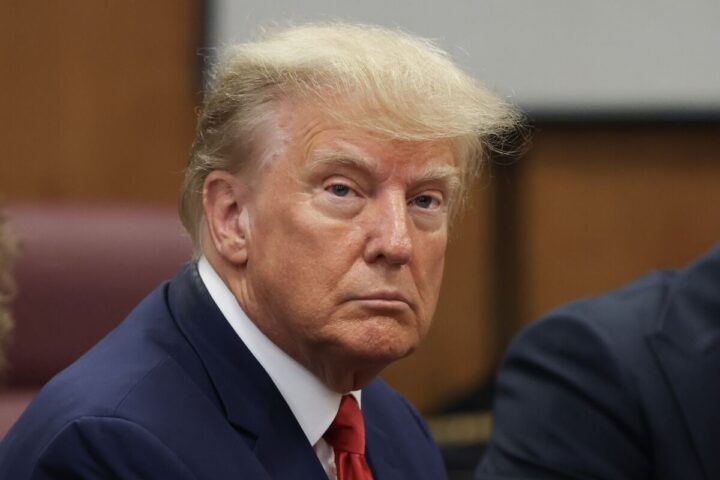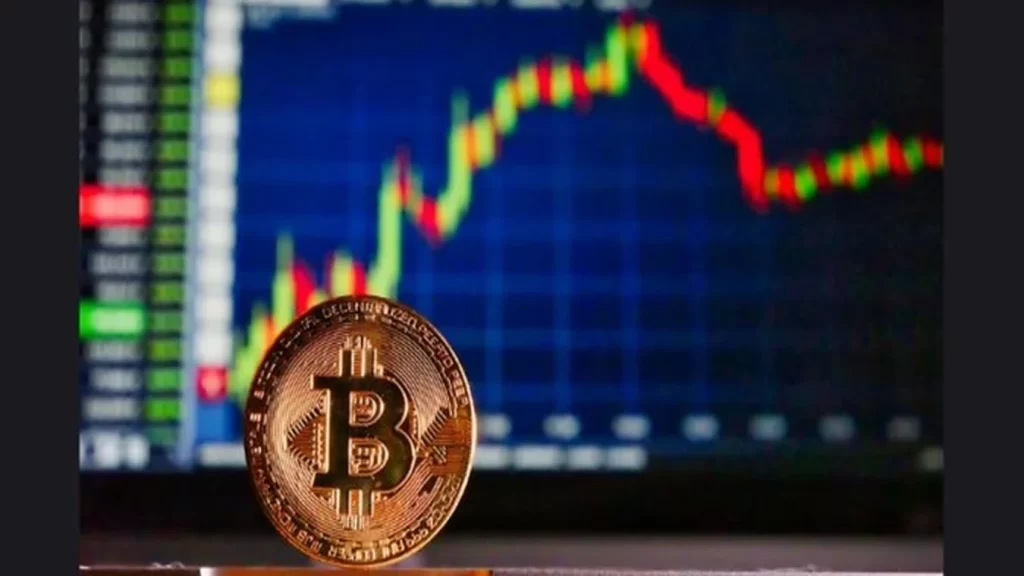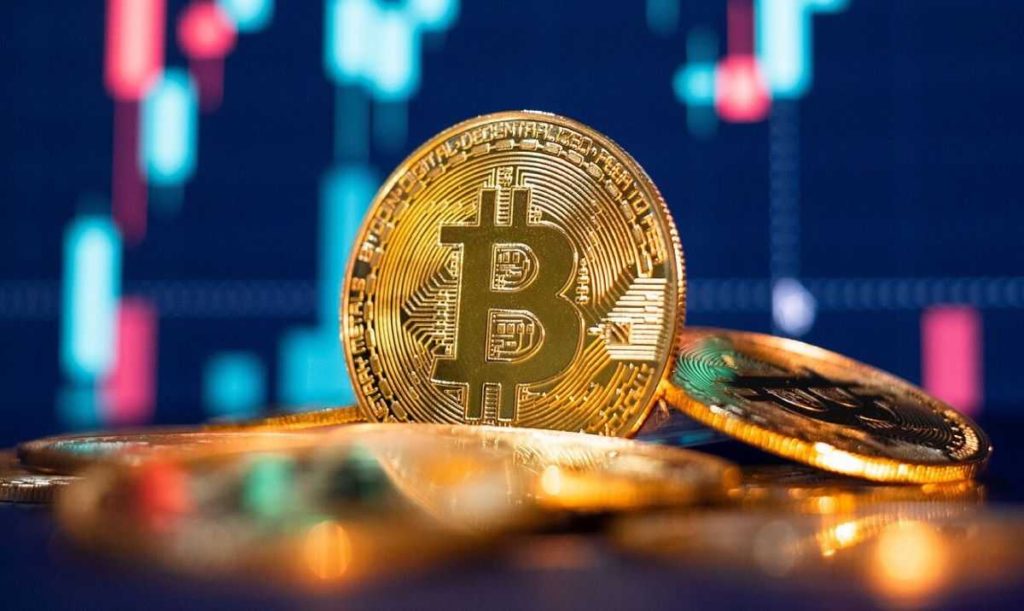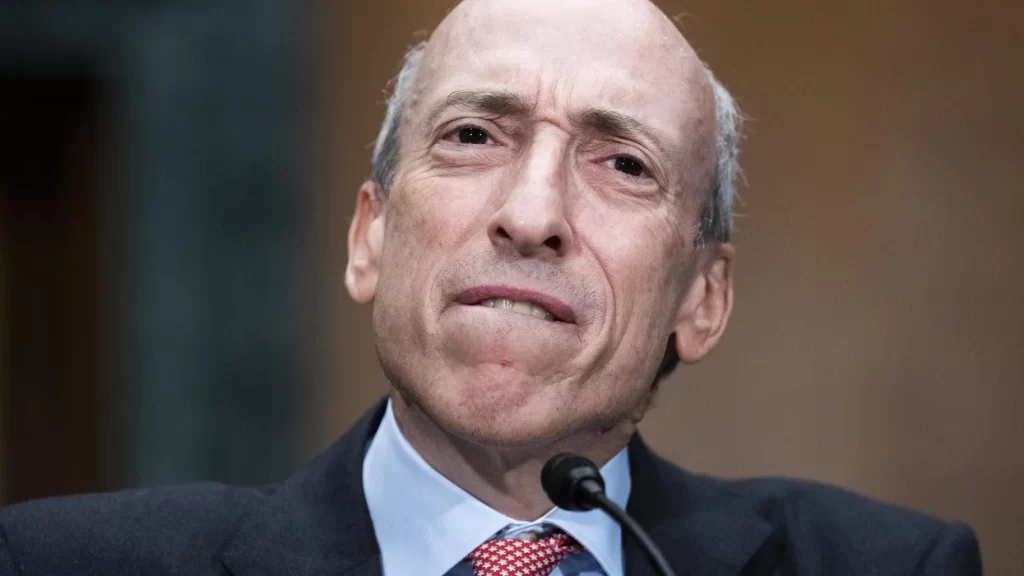On December 19, Bitcoin made a triumphant return, surging above the $43,000 mark, driven by fresh developments surrounding the prospective launch of the United States’ inaugural spot Bitcoin exchange-traded fund (ETF).
Data sourced from Cointelegraph Markets Pro and TradingView illustrated a remarkable recovery in Bitcoin’s price, propelling it to local highs of $43,456 following the daily close.
After an initially uncertain start to the week, BTC/USD rapidly gained momentum, with the December 18th candle closing more than 5% above the day’s lowest point.
Subsequently, news emerged that asset management giant BlackRock, a contender seeking approval for the first-ever U.S. spot Bitcoin ETF, had revised its redemption policy to include Bitcoin as an option.
According to the latest version of BlackRock’s S1 filing with the U.S. Securities and Exchange Commission (SEC), the redemption of a shareholder’s shares for the underlying Bitcoin generally would not trigger a taxable event.
The document also outlined new regulations regarding the exchange of baskets of shares for cash instead of Bitcoin, with the latter contingent upon regulatory approval.
The SEC is scheduled to commence its final deliberations on spot ETFs in early January 2024, making the upcoming month a critical juncture for Bitcoin enthusiasts.
READ MORE: Grayscale Assesses Tax Implications for Spot Bitcoin ETFs Amid Regulatory Scrutiny
Multiple Bitcoin price predictions are contingent on the successful approval of the ETF, which is now perceived as highly probable after years of delays and rejections.
Bob Loukas, a trader and investor, expressed confidence in the approval process, remarking that “the level of SEC engagement and back-and-forth on the Bitcoin ETF tells us this is a 99.9% done deal.”
Meanwhile, the SEC delayed its final decision on several Ether ETFs until May.
In the interim, Bitcoin faces significant events, including the annual candle close and the release of various macroeconomic data, potentially contributing to holiday season volatility.
Traders are closely monitoring price levels, with the possibility of Bitcoin dipping below $40,000 still looming.
Crypto Ed, the founder of trading group CryptoTA, suggested this scenario might unfold before a final upward surge, potentially driving BTC/USD to $50,000 by the end of 2023.
Additionally, popular trader and analyst Matthew Hyland expressed optimism about further upside, citing a bullish divergence in Bitcoin’s relative strength index (RSI) versus its price on daily timeframes.
At the time of writing, the daily RSI stood at 60.45, having cooled off from the elevated levels when Bitcoin reached its recent 19-month high above $44,000.
The crypto community is eagerly anticipating the potential approval of a spot Bitcoin exchange-traded fund (ETF) in the United States, with some experts cautioning that this could have unintended consequences for cryptocurrency exchanges.
Industry insiders are forecasting that a spot BTC ETF could become tradable as early as 2024.
This development, coupled with Bitcoin’s upcoming block reward halving expected in April, has led Blockstream CEO Adam Back to believe that BTC’s price could surge to $100,000.
Additionally, proponents like Jan3 CEO Samson Mow suggest that the approval of a spot Bitcoin ETF in the U.S. could potentially propel Bitcoin to as high as $1 million within a matter of “days to weeks.”
However, the outlook for centralized cryptocurrency exchanges is not as rosy, according to ETF Store president Nate Geraci and Bloomberg ETF analyst Eric Balchunas.
Geraci recently expressed his concerns on X (formerly Twitter), stating that once approved, a spot Bitcoin ETF in the U.S. could lead to a “bloodbath” for cryptocurrency exchanges.
Geraci argues that retail investors trading spot Bitcoin ETFs will enjoy the benefits of institutional-level trade execution and lower commissions.
In contrast, users of crypto exchanges will continue to face higher trading costs and “retail trade execution,” which Geraci emphasizes must improve in order to remain competitive with a spot Bitcoin ETF.
Eric Balchunas underscores that a spot Bitcoin ETF is expected to carry a trading cost of just 0.01%, which aligns with the average fee for ETF trading.
READ MORE: Palau Launches Phase Two of PSC Program with Ripple Partnership for Digital Currency Expansion
In comparison, exchanges like Coinbase currently charge fees that can go as high as 0.6%, depending on factors such as the cryptocurrency, transaction size, and trading pairs.
The introduction of a spot Bitcoin ETF is likely to intensify price competition within the crypto industry.
Balchunas believes that this will redirect funds away from exchanges that invest heavily in advertising, such as during events like the Super Bowl, to attract users.
Balchunas commented, “It would be the last ‘Crypto Super Bowl’ if they launch ETFs because ETFs are such a lean and cost-effective industry.
Some of these crypto exchanges have been capitalizing on their high fees, and this shift could change the landscape significantly.”
Historically, Coinbase has derived a substantial portion of its revenue from transaction fees. In 2022, the platform generated $2.4 billion in transaction fees, representing 77% of its total net revenue of $3.1 billion.
Nonetheless, Coinbase has been actively diversifying its revenue streams by offering additional income-generating services like subscriptions, aiming to reduce its reliance on fees.
Grayscale is currently assessing the potential tax implications linked to spot Bitcoin exchange-traded funds (ETFs) amid the circulation of inaccurate information regarding adverse tax consequences. In a series of posts shared on X (formerly Twitter),
Grayscale aimed to clarify the situation and ensure that retail investors involved with the Grayscale Bitcoin Trust (GBTC) are not expected to face tax-related issues when the fund sells Bitcoin to generate cash for fulfilling share redemptions.
The company is actively working towards obtaining the necessary regulatory approvals to migrate $GBTC to NYSE Arca, and as part of this process, they are considering the potential tax ramifications associated with spot Bitcoin ETFs that may need to sell their Bitcoin holdings to meet share redemption demands.
This discussion has come to the forefront due to the unique structure of GBTC, which is established as a grantor trust.
In a grantor trust, the entity that establishes the trust retains ownership of the assets, in this case, the underlying Bitcoin, for income and tax purposes.
Grayscale emphasized that cash redemptions of grantor trusts do not constitute taxable events for non-redeeming shareholders, such as retail investors.
This sets GBTC apart from mutual funds and many other ETFs, which operate differently for tax purposes. Grayscale’s position is that GBTC should be treated as a grantor trust.
READ MORE: SEC Chair Gary Gensler Hints at Revised Approach to Bitcoin ETFs Following Recent Legal Rulings
This development follows recent reports that the United States Securities and Exchange Commission (SEC) held discussions with Grayscale regarding its spot Bitcoin ETF application.
On December 8, it was reported that Grayscale and Franklin Templeton had met with the SEC to review their applications, closely following a meeting with representatives from Fidelity.
In addition, just a few days prior, on December 5, the SEC decided to postpone its decision on Grayscale’s spot Ether ETF application until January 24, 2024.
This delay underscores the ongoing regulatory scrutiny and evolving landscape surrounding cryptocurrency ETFs.
In conclusion, Grayscale is proactively addressing potential tax implications associated with spot Bitcoin ETFs to provide clarity and reassurance to its investors.
These considerations are taking place within the context of ongoing discussions and regulatory developments surrounding cryptocurrency ETFs in the United States.
Over the past two years, the value of Bitcoin (BTC) has been significantly influenced by the ongoing COVID-19 pandemic, escalating inflation rates, and regional conflicts.
However, according to Blockstream CEO Adam Back, 2024 holds the promise of a resurgence for the world’s leading cryptocurrency.
Back, the cryptographer responsible for pioneering the proof-of-work algorithm utilized in Bitcoin’s protocol, spoke to Cointelegraph about how Bitcoin is currently trailing below the historical price trend line observed during previous mining reward halving events.
These halving events are hardwired into Bitcoin’s code, occurring every 210,000 blocks, and result in a reduction of Bitcoin miners’ block rewards, from 6.25 BTC to 3.125 BTC in the upcoming halving.
Back explained that when analyzing the averages of past market cycles and halving events, it becomes evident that Bitcoin’s relative value is lagging behind widely accepted projections.
Several factors have contributed to this decline in BTC’s price, a trend also observed in traditional financial markets.
“The last few years were like biblical pestilence and plague.
There was COVID-19, quantitative easing, and wars affecting power prices. Inflation running up people, companies are going bankrupt,” Back pointed out.
These events have had a significant impact on financial markets and portfolio management. Investment managers have had to navigate risk and losses, leading to the sale of more liquid assets, including Bitcoin.
As 2023 draws to a close, many of these macro events have subsided, and industry-specific issues have been resolved.
READ MORE: Ripple Advocates for Central Bank Digital Currencies in New White Paper
This positive development has been reflected in Bitcoin’s recent price surge starting in November 2023.
Back reiterated his previous prediction that Bitcoin would reach $100,000 in the next market cycle and emphasized that it might have already reached that milestone if not for the macroeconomic factors mentioned earlier.
He also referred to the “stock-to-flow” model created by PlanB, a pseudonymous former institutional investor.
This model suggests that wise Bitcoin investors historically bought BTC six months before a halving event and sold during significant price surges in the 18 months following the reward reduction.
Given Bitcoin’s recent price hitting $44,000 multiple times in December 2023, Back’s earlier prediction seems less far-fetched.
Additionally, prominent investors and market analysts have highlighted the potential approval of several spot Bitcoin exchange-traded fund (ETF) applications by the United States Securities and Exchange Commission (SEC).
These approvals, expected in early 2024, could lead to substantial institutional investment inflows into BTC-backed products.
Back believes that Bitcoin could reach $100,000 even before the ETF approval and the halving.
He stressed that the ETF’s influence should not be underestimated, particularly as it would allow traditional market segments and major fund managers like BlackRock and Fidelity to invest in Bitcoin indirectly, which they are unable to do directly due to their fund rules and regulations.
In conclusion, Adam Back’s outlook for Bitcoin in 2024 is optimistic, with the potential for significant price gains driven by various factors, including the upcoming halving and the anticipated approval of Bitcoin ETFs.
Bitcoin (BTC) faced a tumultuous day in the cryptocurrency market, with its ticker symbol, BTC, declining sharply to $42,882.
This drop of over $1,300, equivalent to 3.2%, occurred on the heels of a brief recovery from recent volatility. Bitcoin struggled to maintain its position above $43,000 as the bulls failed to gain momentum.
The decline in BTC’s price coincided with news that the United States Securities and Exchange Commission (SEC) had rejected a request from major cryptocurrency exchange Coinbase to revise the rules governing crypto.
SEC Chair Gary Gensler expressed his support for the Commission’s decision, emphasizing that existing laws and regulations apply to the cryptocurrency securities market.
He also stressed the importance of maintaining the Commission’s discretion in setting its own rulemaking priorities.
The SEC’s involvement in the crypto market has been closely watched, especially with expectations that it will approve the first U.S. Bitcoin spot price exchange-traded funds (ETFs) in early 2024.
Gensler clarified that the SEC’s actions are based on its authorities and how courts interpret those authorities.
Analyzing the order books, traders noticed an increase in bid support around the $41,000 level, which became a point of interest.
There was also active supply noted around the $44,000 mark, suggesting a key resistance zone.
On the technical side, the four-hour exponential moving averages (EMAs) were once again in play, with the price contesting these levels and the relative strength index (RSI) dipping below 50.
READ MORE: SEC Stands Firm on Cash Redemption Model for Bitcoin ETFs, Invesco and Galaxy Comply
This setup indicated an impending crucial close in the price action.
Zooming out to a broader perspective, Keith Alan, co-founder of trading resource Material Indicators, observed an ongoing struggle to turn a significant weekly level into support.
This challenge centered around the 0.5 Fibonacci retracement line near $42,500, which represented one of the critical hurdles on the path to revisiting the all-time high of $69,000.
Material Indicators also reported that large-volume traders were showing increased buying activity at the time, suggesting that “Mega Whales” were trying to reclaim the $42,000 price level.
This battle between buyers and sellers indicated the potential for further price volatility in the Bitcoin market.
In summary, Bitcoin faced a downward correction below $43,000, influenced by the SEC’s decision regarding Coinbase’s rule request.
The cryptocurrency market remained dynamic, with traders closely monitoring key support and resistance levels, as well as the actions of significant market players.
The United States Securities and Exchange Commission (SEC) has entered into a fresh round of discussions with asset management firms regarding the potential approval of a spot Bitcoin exchange-traded fund (ETF) in the U.S.
These discussions included officials from the office of SEC Chair Gary Gensler, signifying a notable development in the regulatory landscape for cryptocurrency investments.
According to official court filings, on December 14th, the SEC held a meeting with representatives from BlackRock to deliberate over the proposed rule change that would permit the trading of a crypto investment vehicle on major U.S. exchanges.
This marks the third meeting between BlackRock and the SEC, underlining the growing interest and anticipation surrounding this potential approval. ETF analyst Jayme Seyffart from Bloomberg highlighted the significance of these discussions.
In recent weeks, meetings between asset managers and the SEC have intensified. On December 8th, Grayscale and Franklin Templeton also engaged in discussions with regulators regarding their respective ETF applications. Fidelity had a similar meeting a day earlier.
The most recent meeting on December 14th between BlackRock and the SEC, which involved Gensler’s office, underscores the high stakes involved.
In late November, Chair Gensler’s staff met with representatives from Hashdex to address concerns related to market manipulation and investor protection.
Browse the Latest Crypto News Today
Key topics of discussion included the use of cash creations and redemptions, as well as the acquisition of spot Bitcoin from physical exchanges within the Chicago Mercantile Exchange market.
Several prominent asset managers, including WisdomTree, BlackRock, Invesco, Fidelity, and Grayscale, are actively working towards launching spot Bitcoin ETFs.
Historically, the SEC has denied similar proposals, but it now appears to be deferring its next decisions until early January, coinciding with the expiration of most applicants’ latest deadlines.
If approved, a spot Bitcoin ETF would enable Bitcoin to be traded on major Wall Street exchanges, making it accessible to a wider audience of investors backed by some of the world’s most influential investment firms.
Conversely, if denied, investment managers are likely to appeal the decision, further prolonging the wait.
It’s important to note the distinction between spot Bitcoin ETFs and futures Bitcoin ETFs.
The former directly tracks the real-time market price of Bitcoin, holding actual Bitcoin, while the latter invests in Bitcoin futures contracts, which are agreements based on the future price of Bitcoin.
The SEC approved the first futures Bitcoin ETF in 2021, and now the focus has shifted to spot Bitcoin ETFs as the industry eagerly awaits regulatory clarity.
First Trust, a prominent financial services firm, has made a notable move in the cryptocurrency space by filing for a Bitcoin (BTC) exchange-traded fund (ETF).
However, this ETF is not the typical spot ETF that tracks the performance of Bitcoin directly. On December 14,
First Trust submitted a Form N1-A filing to the United States Securities and Exchange Commission (SEC) for the launch of the First Trust Bitcoin Buffer ETF.
The primary objective of the First Trust Bitcoin Buffer ETF, as outlined in its prospectus, is to participate in the positive price returns of the Grayscale Bitcoin Trust or another exchange-traded product (ETP) that offers exposure to Bitcoin’s performance.
Unlike a spot Bitcoin ETF, which directly follows Bitcoin’s price movements, a buffer ETF employs options to achieve a predefined investment outcome.
Buffer ETFs, often referred to as “defined-outcome ETFs,” are designed to safeguard investors from losses in the event of market declines.
They accomplish this by setting a limit or buffer on a stock’s growth over a specified period, utilizing options to ensure a particular investment outcome and deliver a targeted level of protection against market downturns.
James Seyffart, an ETF analyst at Bloomberg, commented on the First Trust Bitcoin Buffer ETF, highlighting that such funds protect against a predetermined percentage of downside losses while capping potential gains.
He also anticipated the emergence of other unique strategies offering Bitcoin exposure in the coming weeks.
Browse the Latest Crypto News Today
The First Trust Bitcoin Buffer ETF represents one of the initial filings of its kind with the U.S. SEC.
At the time of writing, there are 139 buffer ETFs actively traded in the U.S. market, with total assets under management totaling $32.54 billion.
Buffer ETFs are available across various asset classes, including equities, commodities, and fixed income.
In recent years, buffer ETFs have gained significant popularity, with industry leader BlackRock introducing its first iShares buffer ETFs in June 2023.
These new products, namely the iShares Large Cap Moderate Buffer ETF (IVVM) and the iShares Large Cap Deep Buffer ETF (IVVB), have shown returns of around 5% and 2%, respectively, since their launch, according to TradingView data.
It’s important to note that despite their protective mechanisms, buffer ETFs do not guarantee complete safeguarding of investments.
Investors should be aware that there is a risk of losing some or all of their capital when investing in these funds.
Both First Trust and BlackRock acknowledge that buffer ETFs may not be suitable for all investors and do not provide principal or non-principal protection, meaning investors could still incur losses up to the entire amount of their investment.
Bitcoin could be on the verge of a bullish run in the coming weeks and beyond, thanks to shifting macroeconomic dynamics.
Popular trader Crypto Ed, the founder of CryptoTA trading group, recently noted a potential decline in the strength of the United States dollar (USD), which historically has had an inverse relationship with Bitcoin.
Recent changes in U.S. macroeconomic policy are expected to bolster Bitcoin’s prospects while exerting downward pressure on the USD.
Analysts have been optimistic about the cryptocurrency market’s performance in 2024, citing a combination of favorable macroeconomic data and encouraging signals from the Federal Reserve.
The decline in inflation is seen as a factor that could allow the Federal Reserve to reconsider its stance on interest rate hikes, leading to increased liquidity in the markets, particularly benefiting risk assets like Bitcoin.
Unfortunately, the USD is not set to benefit from this shift and has experienced a significant drop this week due to the impact of monetary tightening on inflation.
The U.S. Dollar Index (DXY) has fallen over 2% since the beginning of the week, currently hovering below $102, marking its lowest level since mid-August.
Crypto Ed shared his optimism for Bitcoin’s long-term outlook, anticipating that a weakening DXY could propel Bitcoin to new all-time highs, possibly reaching $92 for DXY.
Browse the Latest Crypto News Today
In a chart analysis, key levels to watch on the DXY in three-day timeframes were highlighted.
Economist Lyn Alden offered her perspective on the liquidity situation, noting that while global liquidity indicators had experienced some stagnation, a recent dovish stance by the Federal Reserve and the drop in the DXY might provide a boost to liquidity.
Alden also highlighted a market repricing scenario, with markets starting to factor in the possibility of the Federal Reserve lowering interest rates in 2024.
Data from the Federal Reserve itself revealed an increase in its balance sheet for the first time since August, rising by approximately $2 billion in December.
As of December 15th, BTC/USD was trading at $42,700, showing relative stability after a brief period of volatility the previous day.
Bitcoin had posted a 13% gain for December, according to data from Cointelegraph Markets Pro and TradingView.
With a weakening dollar and changing macroeconomic factors, Bitcoin enthusiasts are hopeful for new all-time highs in the near future.
United States Securities and Exchange Commission (SEC) Chair Gary Gensler has suggested a potential shift in the regulator’s approach to Bitcoin exchange-traded products (ETPs) following a recent legal decision involving Grayscale.
During an interview with CNBC on December 14, Gensler addressed the numerous pending applications for spot Bitcoin exchange-traded funds (ETFs, revealing that the SEC is currently processing “between eight and a dozen filings.”
Gensler acknowledged that the SEC had previously rejected several of these applications but indicated a potential change in their stance, stating, “So we’re taking a new look at this based upon those court rulings.”
When asked directly if he was referring to Grayscale, Gensler avoided providing a specific answer, emphasizing that the SEC operates within the framework of laws enacted by Congress and how the courts interpret them.
The SEC’s decision to deny an ETF offering from Grayscale Investments, involving its Bitcoin trust, was overturned by a federal judge in August.
Subsequently, major asset management firms like BlackRock, Fidelity, Grayscale, Invesco, Galaxy, VanEck, and Valkyrie have entered the race to launch spot Bitcoin ETFs.
READ MORE: Elon Musk Unveils Tesla’s Optimus Gen 2
Although these applications have faced delays, some analysts anticipate a potential batch approval in early January 2024.
In another interview with Bloomberg’s Kailey Leinz on the same day, Gensler avoided disclosing the number of spot Bitcoin product filings.
Instead, he highlighted recent developments in the U.S. treasury market as the agency’s current priority.
U.S. Representative Bryan Steil commented on Twitter, criticizing Gensler’s handling of the crypto-related questions:
“Chair Gary Gensler obfuscates on crypto with the press like he does at committee hearings. He does not want to explain his agency’s aggressive regulatory approach which is pushing crypto offshore.”
Bloomberg ETF analyst James Seyffart also remarked, “Gensler very rarely gives clear answers! He’s a master at hedging his words.”
In summary, SEC Chair Gary Gensler’s recent comments have raised speculation about a potential shift in the SEC’s approach to Bitcoin exchange-traded products, following recent court decisions.
This comes as several major asset managers seek approval for spot Bitcoin ETFs, though the regulatory landscape remains uncertain.
As Bitcoin exchange-traded fund (ETF) issuers work on their filings with the United States Securities and Exchange Commission (SEC), the regulator is standing firm in its demand for a “cash” redemption model instead of alternatives proposed by issuers like BlackRock.
On December 14, finance lawyer Scott Johnsson revealed that ETF applicants Invesco and Galaxy have now adopted a cash creation and redemption model for their ETFs.
Their updated S-1 filing with the SEC stated, “The trust expects that creation and redemption transactions will take place initially in cash.”
The SEC has been advocating for a cash redemption model for spot Bitcoin ETFs, while some applicants, including BlackRock, have suggested an “in-kind” model.
So, what’s the difference? A cash creation model involves authorized participants depositing cash equivalent to the net asset value of the creation units.
READ MORE: Blockchain Technology Emerges as a Key Player in the Battle Against Climate Change
The fund uses this cash to purchase the underlying asset, such as Bitcoin. In contrast, the in-kind creation model involves participants depositing a basket of securities that match the ETF’s portfolio, allowing the fund to issue creation units without immediately selling the securities for cash.
The cash model may result in slightly wider spreads and potential tax inefficiencies but offers greater flexibility for fund participants.
Bloomberg senior ETF analyst Eric Balchunas believes the latest filing indicates the SEC’s determination to allow only cash-created ETFs initially.
He mentioned that many were waiting to see if BlackRock could persuade the regulator to consider in-kind creation, but analyst Seyffart suggests that most issuers may eventually adopt the cash creation and redemption model.
In late November, BlackRock met with the SEC to discuss ETF share creation and redemption mechanisms, presenting a revised hybrid in-kind model that favored this method over cash creations.
Bitwise has also shifted towards cash-only creation and redemption since December 4, despite initially having both in-kind and cash options in their documents.
The SEC recently delayed its decision on approving a spot Ether ETF for Invesco and Galaxy Digital.
Representatives from asset managers like BlackRock, Grayscale, and Fidelity have been meeting with the SEC to finalize details for their spot BTC products, with analysts anticipating batch approvals in early January.








